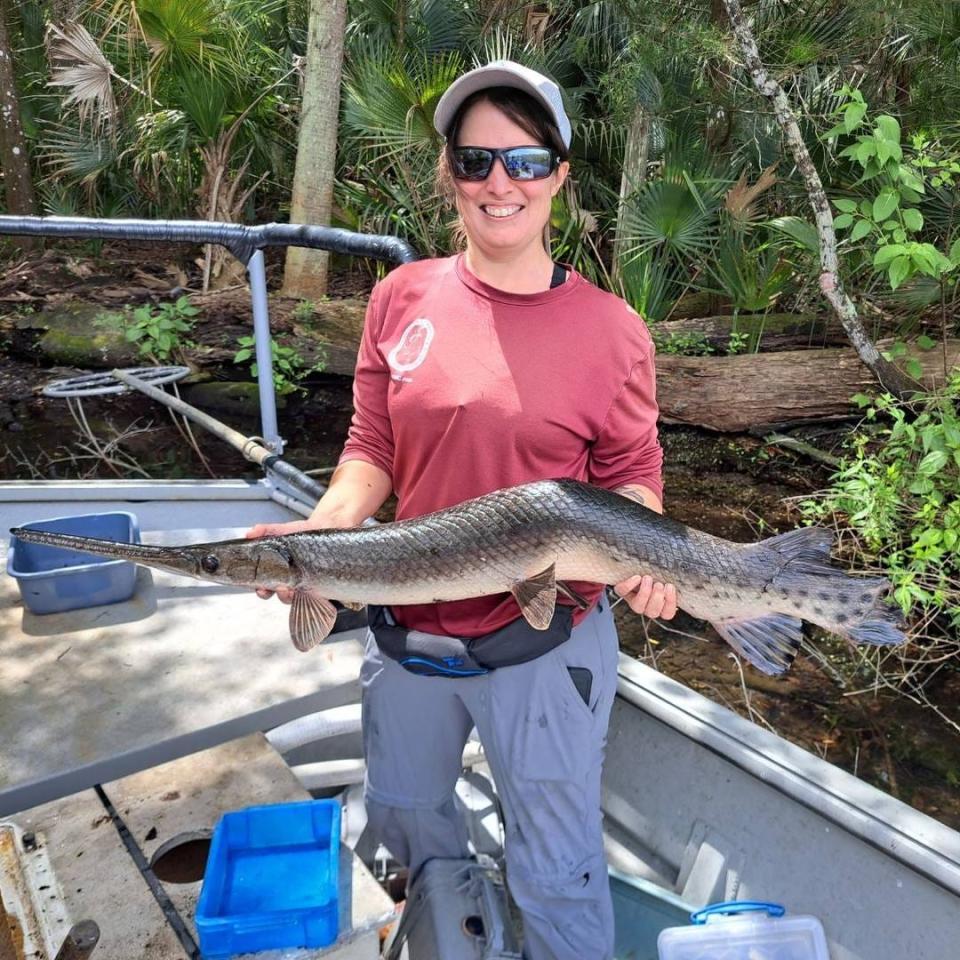FWC biologists catch a 'crooked' longnose gar in Florida. Here's what to know
Crooked gar isn’t a known species, but a unique longnose gar caught by a Florida Fish and Wildlife Conservation Commission biologist must not have gotten the message.
On July 2, the FWC Fish and Wildlife Research Institute posted about a “crooked” gar one of their biologists found while conducting an electrofishing survey in Silver Glen Springs of the Ocala National Forest.
The gar, which measured 2.7 feet long and weighed over 10.6 pounds, is considered an apex predator within many of Florida’s freshwater ecosystems. So, how did this one become crooked?

“Unlike the bull shark with a spinal deformity that we shared a few weeks ago, this fish likely got its interesting shape from a spinal injury at some point in its life,” FWC said in its Facebook post.
Less than a month ago, the FWC received images of another peculiar looking specimen – a juvenile bull shark caught by a local fisherman near Titusville. According to a separate Facebook post, FWC believes the defect was a form of scoliosis or spinal deformity that affected its vertebral column.
Want to know more about longnose gar? Keep reading.
Shorebirds: Neighbors say Pensacola Beach couple is shooing away shorebirds. It's ruffling feathers.
How big can longnose gar get?
Longnose gar can grow up to 6 feet and 8 inches long and weigh up to 35 pounds.
What is the lifespan of a longnose gar?
The Florida Museum says that gar, in general, are slow-growing fish that live for long periods of time. Female gar tend to live longer than their male counterparts, living up to 22 years while males rarely live longer than 11 years.

Where can you find longnose gar?
Longnose gar can be found in slow-moving bayous, estuaries, reservoirs, rivers and streams. The Florida Museum says gar prefer sluggish backwater pools where they can be found floating near the surface.
During mating season, adult longnose gar migrate short distances to faster-moving streams where they spawn and lay eggs.
Are longnose gar dangerous?
Longnose gar don’t pose a significant threat to humans, but like any animal, caution should be exercised if spotted. They have large teeth and can easily cut someone attempting to interact with one.
According to the Florida Museum, their eggs are also poisonous to humans and shouldn’t be eaten.
This article originally appeared on Pensacola News Journal: Crooked gar? FWC biologists find longnose gar with unique quirk

